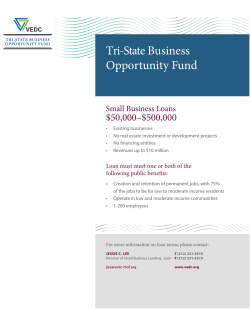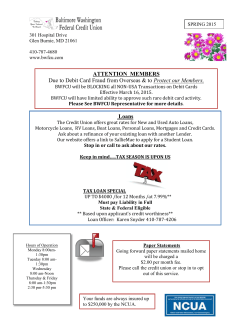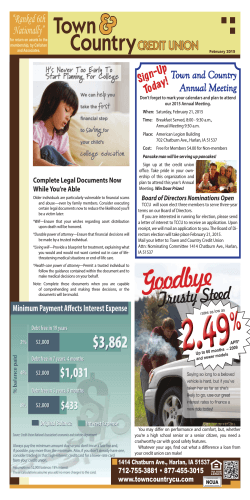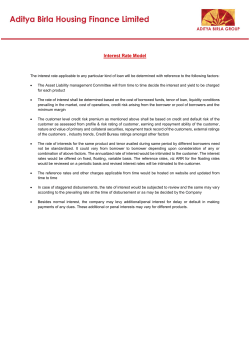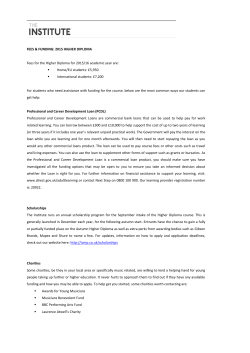
Start Up First-time homebuyer Program Reference
Homeownership Programs Purchase Agreement No personal property may be included on the purchase agreement or addendum. •Personal property is defined as anything which is not installed or attached to the property in some permanent manner and is not legally considered part of the real estate (i.e., free standing appliances, TVs, furniture, etc.) •If there is personal property on the purchase agreement, the personal property must be removed from the transaction before the loan closing. See Minnesota Housing website for sample form. Subsidy Recapture Subsidy Recapture allows the federal government to recover tax subsidies from homeowners under limited circumstances. To owe recapture tax, all three of the following criteria must apply at the same time. The borrowers must: 1. Sell their home within the first nine years after closing the loan, 2. Earn significantly more income than when they bought the home, and 3. Realize a gain from the sale of the home as defined by the IRS (this is different from exposure to capital gains tax). Find out more about Minnesota Housing loan programs: Start Up MCC First-time homebuyer loans First-time homebuyer tax credit Step Up Repeat homebuyer and refinance loans Fix Up Home improvement loans Minnesota Housing finances affordable housing for lowand moderate-income households while fostering strong communities. Start Up First-time homebuyer loans Program Reference Guide If Subsidy Recapture applies, the borrowers incorporate the tax into their federal income tax returns for the year in which they sell the home. for Housing Industry Professionals This reference guide does not contain all information needed to originate loans for sale under Minnesota Housing programs. See the Minnesota Housing Start Up Procedural Manual at www.mnhousing.gov for complete information. Questions? Contact the Partner Solutions Team: 651.296.8215 or 800.710.8871 TTY 651.297.2361 www.mnhousing.gov Follow us on Facebook and Twitter at @mnhousing. www.mnhousing.gov 2014.10.07 Start Up First-time homebuyer loans from Minnesota Housing Start Up is Minnesota Housing’s statewide mortgage loan program for low- and moderate-income first-time homebuyers. The program offers affordable, fixed-rate loans and access to downpayment and closing cost loans for eligible borrowers through participating lenders. To be eligible for a Minnesota Housing Start Up loan, borrowers must meet the following requirements: r Be a first-time homebuyer, defined as anyone who has not had an ownership interest in a principal residence for the previous three years. • Verify ownership by collecting applicants’ last three years of tax returns or IRS transcripts. Borrowers may sign an affidavit if they were not legally required by the IRS to file tax returns in the last three years. Meet household income limits: (subject to change) 11-country metro Rochester MSA Balance of state 1-2-person household $82,900 $81,300 $73,900 3 person + household $95,335 $93,495 $84,985 For more information, see the Start Up Procedural Manual and Income Calculation Worksheet at www.mnhousing.gov. r r r r r r Downpayment and Closing Cost Loans •Fixed-rate, fully-amortized loans Borrower(s) may only receive one Minnesota Housing downpayment and closing cost loan. Loans may be combined with other non-Minnesota Housing Community Seconds®. •Escrows are required •15- and 30-year terms allowed Borrower Eligibility r Loan Requirements Meet home cost limits: (subject to change) •11-county metro area: $310,000 •Balance of state: $265,000 Meet credit score and debt-to-income (DTI) ratios (some products subject to additional credit overlays): •640-659 credit score and maximum DTI of 45% •660+ credit score and maximum DTI of 50% •Eligible products: FHA, FHA Streamlined 203(k), RD, VA, Conventional Fannie Mae HFA PreferredTM, and Conventional Fannie Mae HFA Preferred Risk SharingTM •Origination fee collected from the borrower(s) in accordance with RESPA. Service release premium (SRP) paid by the Master Servicer in an amount established by Minnesota Housing and posted on Minnesota Housing’s website. Property Eligibility The property must be a principal residence located in Minnesota and subject to product guidelines, including: •Single-family residences •Duplexes •Townhomes/condos/planned unit developments •Modular homes • Manufactured homes financed with government insured/guaranteed loans •Community Land Trust leasehold estates Excluding: •Investment property and recreational homes •Home-based businesses that provide exclusive business use which is greater than 15% of the total square footage (including basement) Co-signers allowed, subject to product guidelines. All downpayment and closing cost loans require: •Borrower contribution of $1,000, or 1% of the purchase price, whichever is less. •Homebuyer education course (www.hocmn.org). Deferred Payment Loan Key Features Monthly Payment Loan Up to $5,000 or 5% of the Loan Amount purchase price, whichever is greater Deferred Payment Loan (DPL) Option Up to $5,000 or 5% of the purchase price, whichever is greater ($7,500 maximum) Loan Term 10-year term Equal to first mortgage term Deferred payment repaid upon satisfaction of first mortgage Interest Rate Equal to first mortgage rate Interest-free Income Limits Start Up income limits (see website) Maximum Allowable None Post-Closing Liquid Assets Required; Lender endorses note and assigns mortgage Disclosures to Minnesota Housing at closing Additional Eligibility None Requirements Occupy the property within 60 days after closing. Homebuyer education course required for some programs and borrowers (www.hocmn.org). www.mnhousing.gov Up to $10,000 (eligibility and amount determined by approved lender) Fully amortized loan with Repayment monthly payments Deferred Payment Loan income limits (see website) $8,000 or 8 months PITI, whichever is greater Required; Lender endorses note and assigns mortgage to Minnesota Housing at closing All borrowers must occupy the property and meet the first-time homebuyer definition. Deferred Payment Loan Plus (DPL+) Option None Borrower must meet two of the four criteria: •Single headed household with minor dependent(s) •Household of four or more people •Disabled household member •Front-end ratio of 28% or higher
© Copyright 2026
